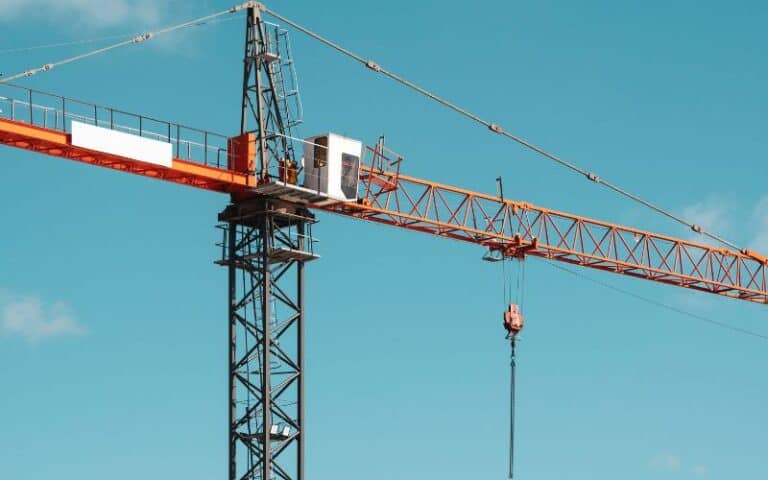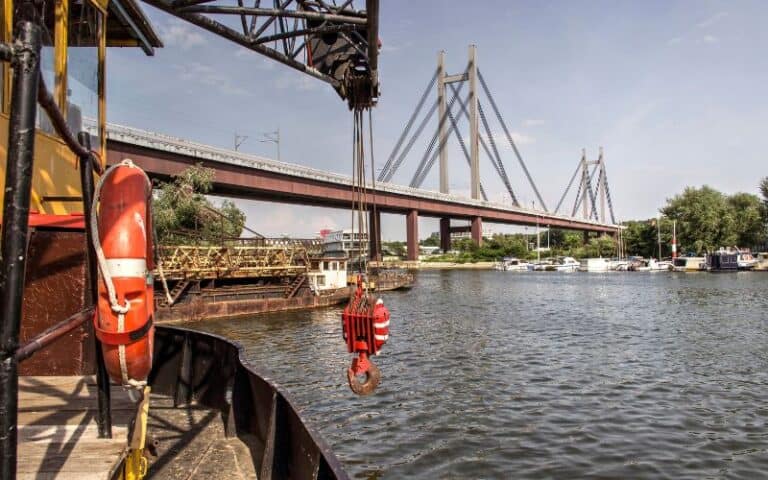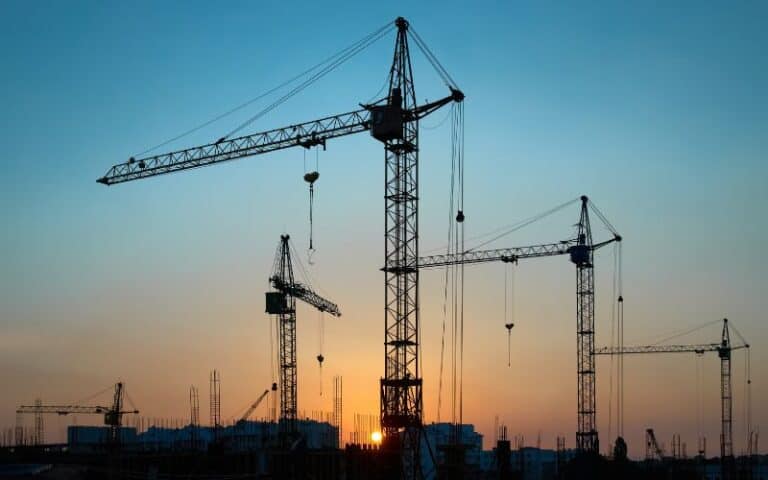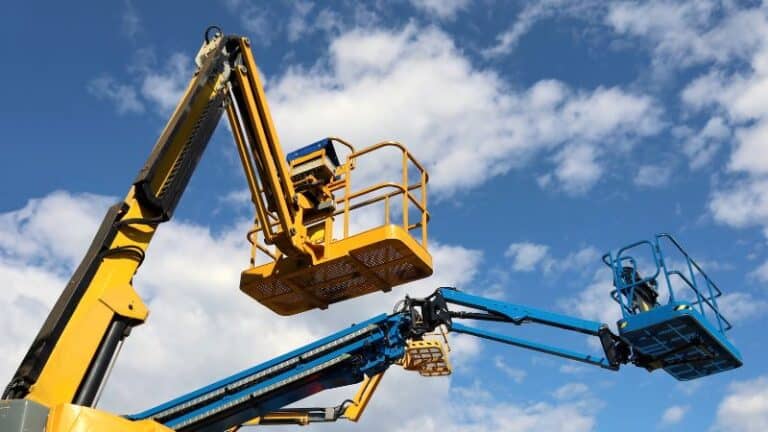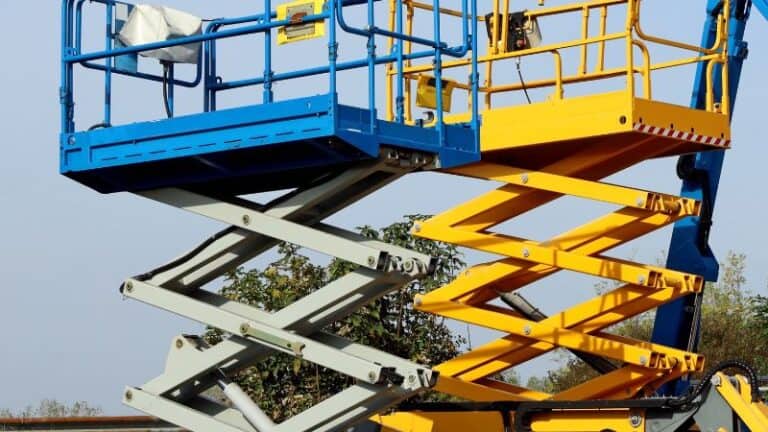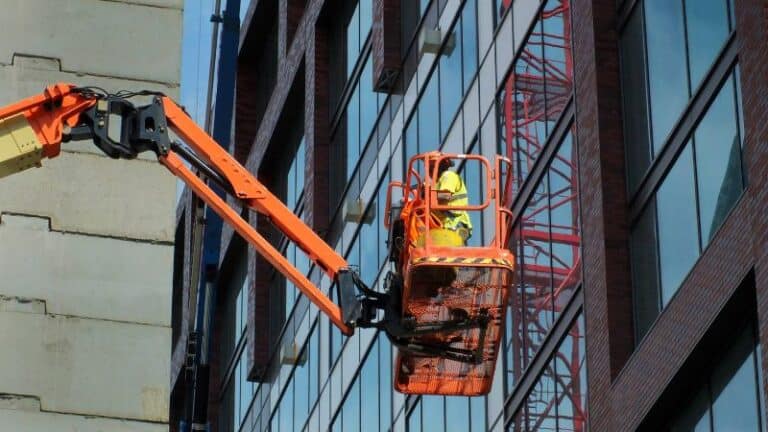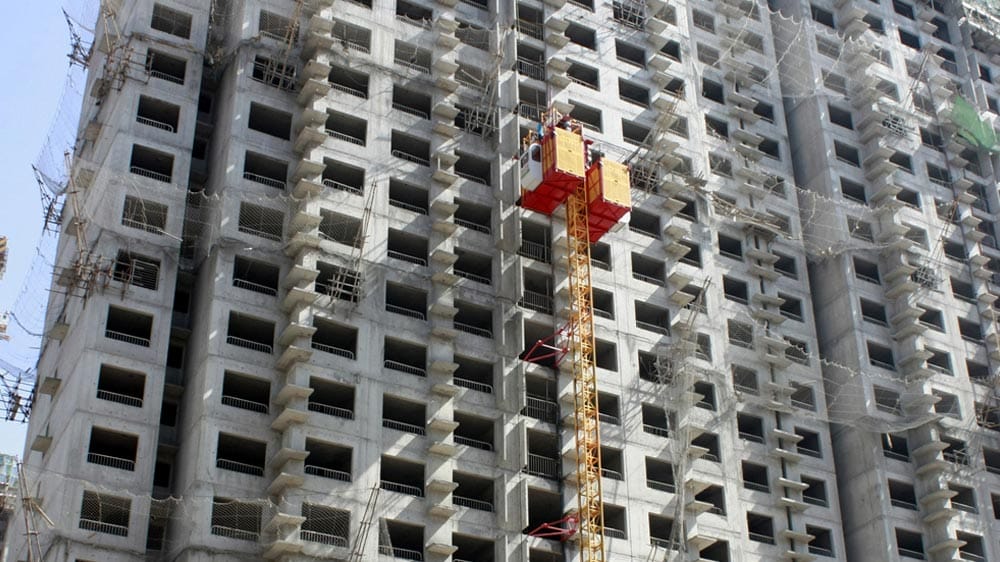
Introduction to Construction Hoists
In the dynamic world of construction, construction hoists play a vital role in vertical lifting. These devices, often referred to as personnel hoists, or construction elevators, are the workhorses that enable you to transport materials, tools, and workers between various floors when building high-rises.
Key Components:
- Cage: The area where you load materials and personnel.
- Mast: The structure that guides the cage vertically.
These hoists offer a combination of strength, reliability, and safe lifting practices.
Key Components of Hoists
When you’re working with construction hoists, also known as outdoor elevators, it’s essential to know the different parts that make up these complex machines. These parts work together to ensure safety and efficiency on the job site.
1. Mast (Guide Rail Bracket): The mast, also called the guide rail bracket, is the key vertical support structure in a construction hoist or elevator system. It consists of steel mast sections that bolt together to form a continuous vertical tower along which the hoist platform or cage travels up and down.
| Component | Description |
| Steel Pipe | Forms part of the mast section. |
| Angle Steel | Strengthens the mast structure. |
| Gear Racks | Facilitate movement, fitted to the mast with special screws. |
2. Cage: The cage is an enclosed platform with integrated features for material handling that travels up and down the vertical mast to transport workers, equipment, and construction materials efficiently around a job site. Its upper part connects to the lifting system while the lower part holds the load.
- Upper Part: The upper part connects to the hoist system’s lifting ropes or chains via a steel frame. This securely suspends the cage.
- Lower Part: The lower part has a sturdy floor frame with mesh or steel plating to withstand load. It carries people, tools, and materials and often has integrated features like removable gates, equipment racks, or shelves to hold materials for transport.
3. Underframe and Protection Fence: The underframe supports the entire hoist structure and distributes the load to the foundation, while the protection fence adds safety.
4. Wall Ties and Cable Guide Systems:
- Wall Ties: Secure the mast to the building for added stability.
- Cable Guide Rail: Protects and manages the cabling to prevent entanglement.
5. Drive System and Electrical Components:
- Drive System: Situated atop the cage, comprising a driving board and frame with multiple units.
- Electrical Components: May include a variable frequency speed control for smooth operation and an array of switches and controls for operation.
Understanding these components helps you operate the hoist with confidence, knowing each part’s role in your safety and the machine’s functionality.
Safety Considerations for Hoist Operation
When operating a construction hoist, your safety depends on strict adherence to guidelines that cover everything from regular inspections to operational protocols and load management.
Inspection and Maintenance
Regular inspections are key to ensuring the safety and longevity of your hoists. You should conduct these checks according to the recommendations laid out by the American Society of Mechanical Engineers (ASME) or the manufacturer’s guidelines.
- Daily Inspections: Check for any obvious damage or wear and tear before use.
- Periodic Maintenance: Replace worn parts. Keep detailed maintenance records.
Operational Safety Protocols
Following established safety protocols during hoist operation is vital to prevent accidents.
- Read the hoist’s operational manual carefully.
- Always ensure that safety devices are enabled and functional.
- Utilize proper signaling methods when operating the hoist.
Load Capacity and Lifting Speed
Understanding your hoist’s load capacities and lifting speeds is essential to maintain operational integrity and safety.
- Load Limits: Never exceed the manufacturer’s recommended load capacity.
- Lifting Speeds: Adhere to lifting speed guidelines to prevent load swing or instability.
Hoist Installation and Setup
In establishing an efficient construction hoist, your focus should be on meticulous site preparation and the precise assembly of the hoist components. Here’s how you can set up your hoist for optimal operation.
Site Preparation
Before you start, ensure your construction site is ready for installation. Here’s what you need to do:
- Assess the Ground: The foundation should be solid and level. Conduct soil analysis to determine the load-bearing capacity and use stabilizers if necessary.
- Clear Debris: Remove any obstacles that may interfere with the installation or operation of the hoist.
- Establish Safety Zones: Mark off areas to keep unauthorized personnel away during the installation process.
- Utility Checks: Verify the location of any underground utilities to avoid damages and ensure safe drilling for anchor points.
Assembly and Erection of Hoists
After preparing your site, it’s time for the actual hoist assembly:
- Unloading and Inspection: Carefully unload the hoist components. Inspect each piece for damage before assembly to ensure safety and functionality.
- Assembling the Mast Sections: Connect the mast sections with the provided bolts and fasteners, following the manufacturer’s guidelines strictly. Use a crane for lifting sections into place if they are heavy or unwieldy.
- Attaching the Hoist Cage: Attach the platform or hoist cage to the frame, ensuring that all safety systems are correctly in place.
- Electrical and Mechanical Systems: Install the electrical and mechanical systems, including brakes, motors, and control panels, with a professional technician’s help to ensure compliance with safety standards.
- Testing: Conduct comprehensive tests on the hoist. This includes checking the hoist movement, emergency stops, and overload systems.
Hoists for Material and Personnel Lifting
In the realm of construction and industry, you’ll commonly encounter two main types of hoists: material hoists and personnel hoists. Each is designed to enhance safety and efficiency by effectively transporting various loads vertically.
Material Hoists
Material hoists are your go-to equipment for vertically transporting materials like tools, equipment, and construction supplies. They are engineered to facilitate the safe and secure movement of heavy items on a construction site or within an industrial environment. When you’re selecting a material hoist, consider attributes such as load capacity, lifting speed, and the size of the platform, ensuring it caters to the demands of your project.
- Load Capacity: Typically ranges from light-duty to heavy-duty.
- Lifting Speed: Varies according to model and specific job requirements.
- Platform Size: Ensure it’s sufficient to hold the materials you intend to lift.
An efficient material hoist can significantly reduce manual labor and enhance operational timelines.
Personnel Hoists
Personnel hoists are crucial for safely lifting personnel to various heights on a job site, thereby serving as temporary elevators during construction or maintenance projects. These hoists are subject to stringent safety standards, which must be adhered to, as they directly affect the well-being of the workers they carry.
- Safety Features: Include emergency brakes, interlocks, and overload alerts.
- Compliance: Must meet or exceed industry standards and manufacturer’s specifications.
Investing in a reliable personnel hoist is an investment in safety and efficiency, minimizing the risk of accidents and facilitating easy access to different construction levels.
Renting vs. Purchasing Construction Hoists
When you’re faced with a construction project, one of the key decisions you’ll have to make is whether to rent or purchase a construction hoist. This choice can greatly influence your project’s budget and efficiency.
Rental Considerations
When you rent a construction hoist, you’re looking for flexibility and a cost-effective solution for short-term projects. Here are specific aspects to consider:
- Availability and Convenience: Renting can provide you with access to a variety of hoists suitable for different tasks without the need for long-term storage.
- Maintenance and Upkeep: The rental company typically handles maintenance, meaning you won’t have to worry about these additional costs and logistics.
- Project Duration: If your project is temporary or you rarely require a hoist, renting is often the more sensible financial decision.
Advantages of Purchasing
Purchasing a construction hoist can be advantageous, especially if your projects are frequent and long-term. Here’s why buying might be the right choice for you:
- Long-Term Savings: Though the initial cost is higher, owning a hoist can be more cost-effective over time, eliminating recurring rental fees.
- Asset Ownership: As an owner, the hoist becomes a business asset, which you can depreciate and possibly even resell in the future.
- Customization: When you own a hoist, you have the freedom to modify it according to your specific project needs without the limitations often imposed by rental agreements.
As leaders in the construction hoist industry, IHURMO can help you find the right solution no matter your lifting needs. Our experts provide professional guidance and technical support to ensure you have the optimal hoist for your project.
Specialized Hoist Systems for Construction
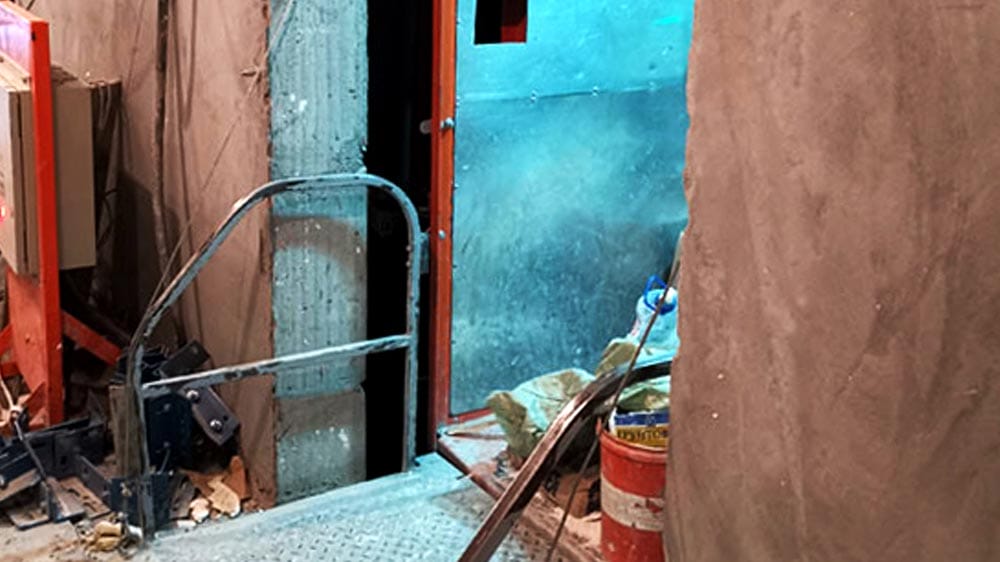
In the construction industry, you’ll encounter specialized hoist systems designed to handle a variety of tasks. These systems ensure the safe and efficient movement of both materials and workers in vertical spaces, particularly in high-rise project sites.
Transport Platforms
Transport platforms are a vital component in modern construction, offering a reliable method for moving materials and workers. Equipped with robust platforms, these hoists can carry heavy loads up and down a building site effectively:
- Capacity: Typically ranging from a few hundred to several thousand kilograms.
- Usage: Primarily used for transporting large materials like drywall, steel beams, and construction equipment.
Suspended Platforms
For work on building exteriors or structures where traditional scaffolding cannot reach, suspended platform are your solution. These systems rest on traction hoists that scale the side of structures:
- Flexibility: Allows workers to access difficult-to-reach areas.
- Safety Features: Include fall arrest systems and backup safety locks to protect workers.
These systems are customized for the requirements of each project, integrating seamlessly with a building’s design and ensuring that your construction progresses smoothly and safely.
Hoists in Different Construction Environments
Construction hoists are versatile and can be adapted to suit various types of projects. Whether you’re working on a towering high-rise or within the industrial sector, different environments call for specialized hoist solutions to tackle unique challenges. Let’s explore how hoists function in these environments.
Hoists for High-Rise Projects
When tackling a high-rise construction project, you need a hoist capable of navigating the significant vertical distances with efficiency and safety. Construction hoists are engineered to carry materials, tools, and personnel, which often includes heavy items, over multiple floors. On your job site, it is crucial to have a hoist that seamlessly fits into the construction process, ensuring that operations keep moving without downtime. Typically, these buildings demand hoists with high load capacities and speed control features to maintain a consistent rhythm of work.
Hoists in Industrial and Manufacturing Settings
In industrial and manufacturing settings, hoists often take the form of industrial elevators. These are pivotal for tasks that involve transporting large, bulky items that other machinery might struggle to handle. Here, the focus is on robustness and reliability. Industrial hoists are distinct in that they are designed to withstand harsh environments and heavy usage. The key features you might look for include enhanced durability, precision controls for complex maneuvers, and the capability to lift extremely heavy industrial components safely and effectively.
Auxiliary Equipment for Hoists
In this section, you’ll explore the essential components that complement construction hoists: the power source required to operate the equipment and the controls used for maneuvering the hoist.
Control Stations and Remote Operation
Your control over the hoist is facilitated by:
- Wired Pendant Station: A control station that connects to the hoist with a wired link. It allows you precise control but keeps you tethered to a specific location.
- Wireless Controls: Enhance your mobility and safety, as you’re not restricted by wires and can operate the hoist from a safer distance.
Each station, whether wired or wireless, feeds your input commands to the hoist’s system, thus controlling its movement and the precision with which it positions a load.
Remember to select your auxiliary equipment carefully to match with the type of hoist you’re employing and the requirements of your specific work environment.
In conclusion, construction hoists play a vital role in safely transporting materials and workers on building sites. While the basic mechanisms may seem straightforward, ensuring proper installation, operation and maintenance requires specialized expertise.
The professionals at IHURMO have decades of experience in designing, manufacturing and servicing hoists to meet the unique needs of projects worldwide. Whether you need assistance selecting the right model, setting it up efficiently, or troubleshooting any issues down the road, our technical team stands ready to support you. By leveraging IHURMO’s industry-leading knowledge and customer service, you can feel confident your hoisting needs are covered every step of the way.

